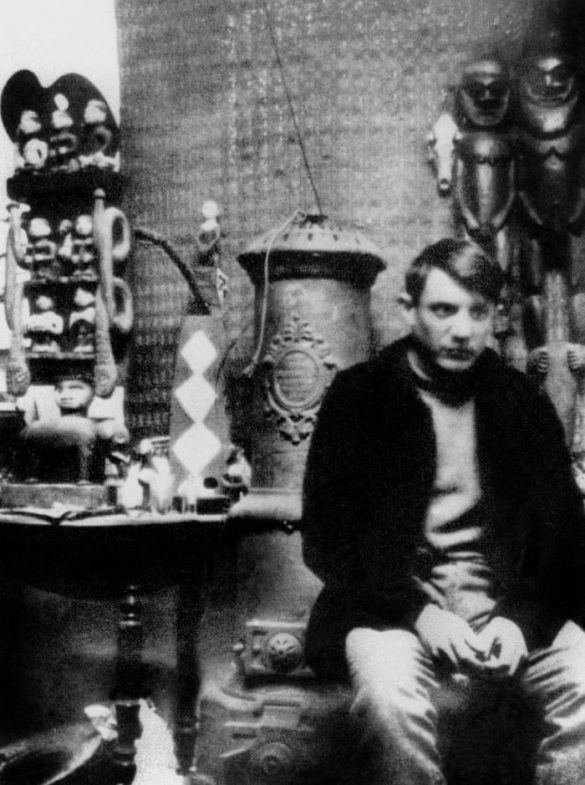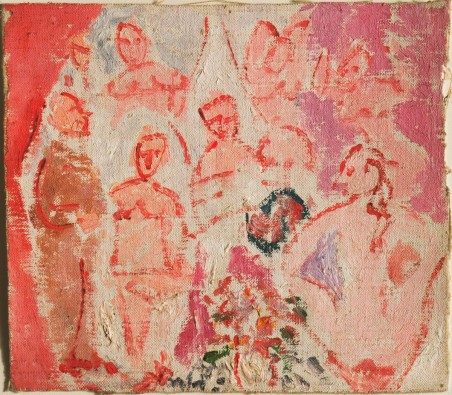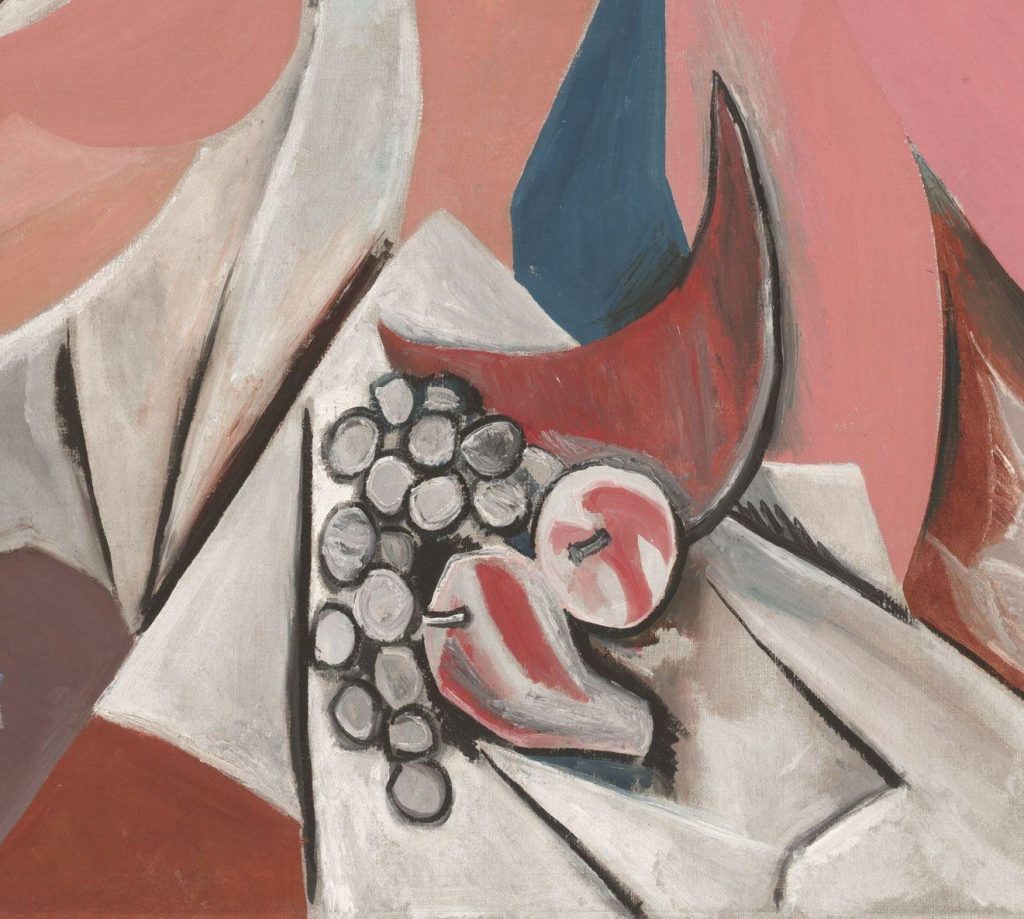10 Iconic Floral Still Lifes You Need to Know
Flowers have long been a central theme in still-life painting. Each flower carries its own symbolism. For example, they can represent innocence,...
Errika Gerakiti 6 February 2025
25 November 2023 min Read
The year 2023 marks the 50th anniversary of the death of Spanish artist Pablo Picasso. Picasso Celebration 1973-2023, a large-scale transnational event organized by the Spanish and French governments, will take place internationally as a way to celebrate this artist and his legacy. Here you can read about one of his most famous artworks to get a taste of his influence on the 20th century and beyond!
Pablo Ruiz Picasso dedicated his whole life to art and is known for being one of the greatest artists of the 20th century. The Young Ladies of Avignon, a canvas depicting five naked prostitutes, is one of the most recognizable paintings by Picasso. This painting is considered to be one of the artist’s most groundbreaking works and, due to its importance, is listed in all studies on Picasso’s works as well as numerous monographs.
I paint the way some people write an autobiography. The paintings, finished or not, are the pages from my diary.
Let’s see what facts about Picasso’s life are hidden in Les Demoiselles d’Avignon.
Picasso didn’t come up with the name of the painting as we know it today. In fact, the original title of the painting wasn’t so distinguished. Picasso named it Le Bordel Philosophique and until his death he referred to this painting as “mon bordel” (my brothel). André Salmon gave the painting its current title, Les Demosielles d’Avignon (eng. The Young Ladies of Avignon), on the occasion of the painting’s first exhibition in 1916. It was a pun that evoked associations with the street Carrer d’Avigno in Barcelona (known for its brothels) and Avignon, the place of origin of Max Jacob’s grandmother, a friend of Picasso.
Well, as you can guess, Picasso didn’t like the prudishness of Salmon’s title.
That’s right, even critics didn’t foresee Picasso’s genius. At first, Picasso’s friends thought that the work would contribute to the end of the painter’s artistic career, among laughter, explaining the change in the painter’s style as “willingness creating the fourth dimension”. Among the people who mocked the painting were painters Henri Matisse and Georges Braque, collectors Leo Stein and Sergei Shchukin, poet Guillaume Apollinaire, and critic Félix Fénéon. Shchukin talked about “loss for French art” while Henri Matisse considered the painting “an insult, an attempt to ridicule modernism”. Well-known critic and talent seeker Fénéon also underestimated Picasso’s work and advised him to “dedicate himself to caricature”.
Everyone has heard about Cubism, but when did it start? Who started it? And, most importantly, why?
Researchers agree that this is one of the first paintings in which Picasso experiments with the form, depicting a shallow surface in a distorted way, breaking it into small fragments and thus rejecting geometric perspective. Yet, despite noticing this innovative approach, they weren’t so sure about the nature of this phenomenon in Picasso’s art. Some of them claim that this is “the first Cubist painting” and others deny that thesis. The rest only acknowledge that in this painting we can observe that Picasso experiments with form and his style slowly evolves. Whether we agree with this thesis or not, Les Demoiselles d’Avignon definitely cleared the way for a new style in modern art.
Picasso was notorious for his ironic statements. In one of his conversations with Christian Zervos he admitted that “when he was painting Les Demoiselles d’Avignon, his attention was focused on the Iberian sculpture in the Louvre and an attempt to combine these (“primitive”) forms with African art is inexact”. He, therefore, denied inspiration stemming from African art and argued that his inspirations were purely Iberian. Picasso may have been introduced to African art through Matisse in 1906 or 1907 or, as he himself claimed, thanks to visiting the Ethnographic Museum in Trocadero. Furthermore, his interest in l’Art Negre led him to buy three sculptures from Oceania and two from Africa. The topic of the role African art played in Picasso’s art remains controversial, with many scholars arguing that he indeed owed a lot to African sculpture, particularly African masks.

Photograph of Pablo Picasso in his workshop in Montmartre, Paris, surrounded by African art, ca. 1908. Photograph: Apic/Getty Images.
The works of El Greco and Cezanne are most often mentioned when it comes to the style of Picasso’s painting. However there is so much more! Les Demoiselles was also inspired by the works of Andre Derrain, Henri Matisse, Jean Auguste Dominique Ingres, Henri de Toulouse-Lautrec, Academic, and Symbolist art.
Some might say: “a child could paint better than this”. But does a child really think through the composition? I bet not. Picasso preceded the final work on canvas with a series of preparatory drawings and oil sketches which he created from the end of 1906. The studies for this painting were the most comprehensive than for any other artwork in his life.
Picasso created a lot of preparatory sketches for this canvas, 19 of them present the whole composition. When we analyze them, we can observe how the composition changed through time. Initially, the piece consisted of seven figures, including two male figures, and a still life on a table. As Picasso explained, one of those men was a student (shown on the left side, entering the room) and the other was a sailor (sitting in the center behind a table with fruit and porrón, holding a skull in his hand). These male figures provide a new, allegorical interpretation of the painting.

Pablo Picasso, Study sketch for Les Demoiselles D’Avignon, 1907, Museum of Modern Art, New York, NY, USA. © 2023 Estate of Pablo Picasso / Artists Rights Society (ARS), New York.
The table with still life in early sketches was interpreted as an “intruder” invading the women’s space. According to Laurence Steefel, fruits, in particular, the sharp-pointed piece of watermelon, (which is shaped like a male penis) represents masculinity – a phallic force that “penetrates” the women’s space.

Pablo Picasso, Les Demoiselles d’Avignon, 1907, Museum of Modern Art, New York, NY, USA. Detail. © 2023 Estate of Pablo Picasso / Artists Rights Society (ARS), New York.
William Rubin interpreted the disfigurement of the women’s faces as signs of syphilis, which Picasso subconsciously feared. Rubin, in his interpretation of the painting, considered the intended skull to be a vanitas symbol, which he associated with the risk of venereal diseases. Such ailments could be contracted from prostitutes meanwhile smallpox was transmitted by sailors who used their services. Picasso, on the one hand, was afraid of venereal diseases, and on the other hand, he was fascinated by them. He visited the Hospital of Saint Lazarus and drew prostitutes being treated for syphilis.
In one of his statements, Picasso admitted that he and his friends mocked each other by identifying women from this painting as their loved ones. Picasso’s friends saw in one of the Ladies Fernande, the painter’s girlfriend, and in others Marie Laurencin as well as Max Jacob’s grandmother.
Did you know all these facts about Picasso’s Les Demoiselles d’Avignon? This is a groundbreaking work both for the artist himself and for the whole of Western art. Pablo Picasso broke with the hitherto understanding of art in terms of aesthetics through the intentional deformity of women. Flat surfaces, the influence of “primitive” art, geometrization, and reduction of figures first appeared in one work and were an important starting point for the development of a new artistic language – Cubism.
Supported by renowned cultural institutions in Europe and the United States, the Picasso Celebration 1973-2023 program is structured around over 50 exhibitions and events to be held at renowned cultural institutions in Europe and North America. As a whole, the events aim to present a historiographical approach to Picasso’s work.
The program offers an opportunity to assess the current state of research and understanding of Picasso’s work. Through a series of symposiums, the first being at the Museo Nacional Centro de Arte Reina Sofía in Madrid, followed by a significant international symposium on December 6-7-8, 2023 at Unesco in Paris, the legacy of the artist will be further explored. The latter symposium will bring together various stakeholders including museum institutions, research centers, and researchers under the theme “Picasso in the 21st Century: Historical and Cultural Issues.”
Alfred. H. Barr Jr., Picasso: Fifty Years of His Life, New York 1946.
John Golding, The „Demoiselles d’Avignon”, “The Burlington Magazine”, vol. 100, no 662, 1958.
Christopher Green, An Introduction to Les Demoiselles d’Avignon, [in:] Picasso’s Les Demoiselles d’Avignon, red. Ch. Green, Cambridge 2001.
Elizabeth Hutton Turner, Who Is in the Brothel of Avignon? A Case for Context, “Artibus et Historiae”, vol. 5, no 9, 1984.
William Rubin, The Genesis of Les Demoiselles d’Avignon, 2003.
James J. Sweeney, Picasso and Iberian Sculpture, „The Art Bulletin”, vol. 23, no 3, 1941.
Laurence D. Steefel Jr., The Neglected Fruit Cluster in Picasso’s “Les Demoiselles d’Avignon”, “Artibus et Historiae”, vol. 13, no 26, 1992.
DailyArt Magazine needs your support. Every contribution, however big or small, is very valuable for our future. Thanks to it, we will be able to sustain and grow the Magazine. Thank you for your help!